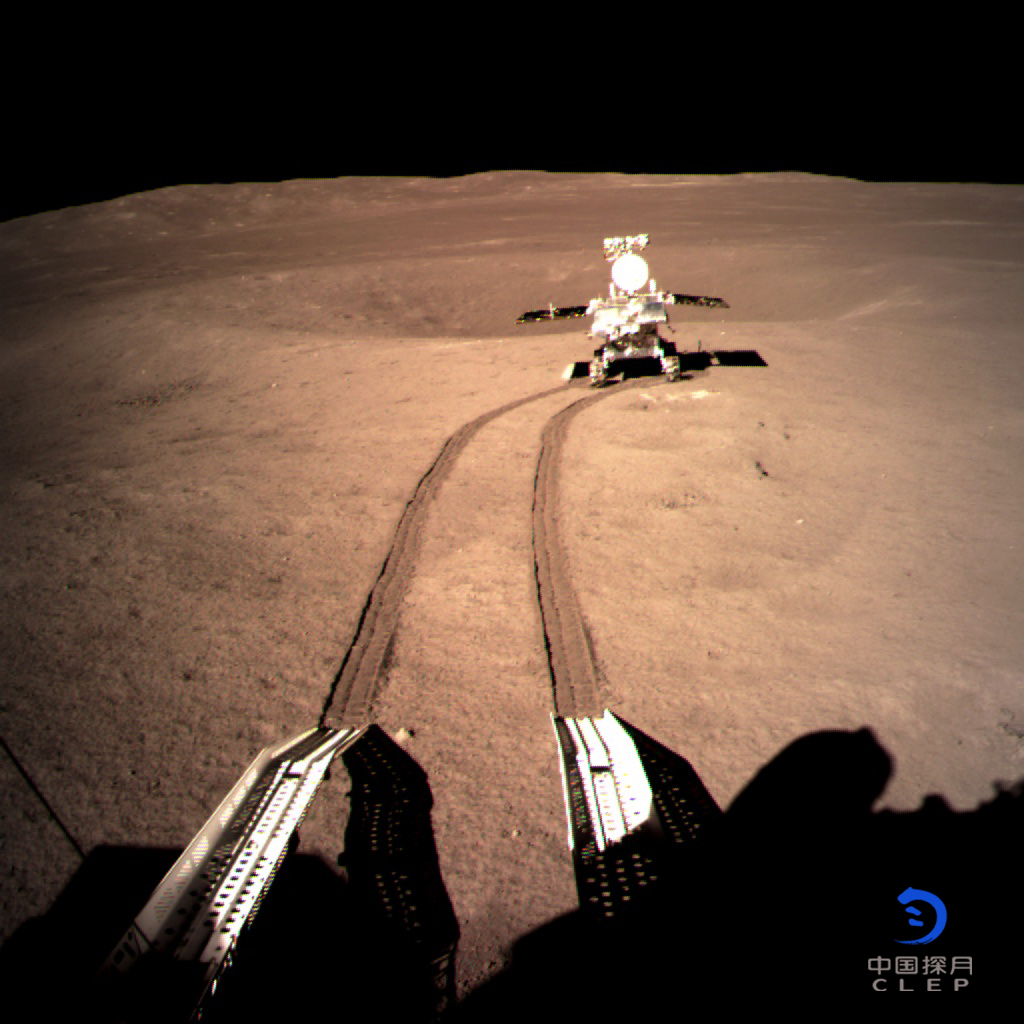Chinese Moon Rover Making Tracks on Lunar Far Side (Photo)

China's far-side moon rover is already busy exploring its exotic new home.
On Wednesday night (Jan. 2), the Chang'e 4 rover and its stationary-lander companion pulled off the first-ever soft touchdown on the lunar far side, coming to a rest inside the 115-mile-wide (186 kilometers) Von Kármán Crater.
The six-wheeled rover, known as Yutu 2, isn't pausing to catch its breath, as a newly released photo shows. Yutu 2 has already put a fair bit of space between itself and the lander, trundling over near the rim of a small crater on the floor of Von Kármán, which itself lies within an even larger impact feature — the 1,550-mile-wide (2,500 km) South Pole-Aitken Basin. [China's Chang'e 4 Moon Far Side Landing in Pictures]
Both Yutu 2 and the lander sport four science instruments, which they'll use to study the surrounding dirt and rocks and probe the far side's subsurface. Such observations could help scientists better understand the moon's composition, structure and evolution, Chinese space officials have said.
Chang'e 4's images and data come home via a relay satellite called Queqiao, which is parked at a gravitationally stable spot beyond the moon. (The lunar far side always points away from Earth, so communicating directly with rovers or landers there is a no-go.)
Queqiao, which launched in May 2018, is collecting some data of its own. The spacecraft totes an astronomy instrument, and it has sent home striking images of the moon and Earth from its unique vantage point in space.
The solar-powered Yutu 2 is designed to operate for at least three months on the lunar surface. The original Yutu was also a moon rover, which landed on the near side in December 2013 as part of China's Chang'e 3 mission. (In Chinese mythology, Chang'e is a moon goddess, and Yutu, or "Jade Rabbit," is her pet.)
Breaking space news, the latest updates on rocket launches, skywatching events and more!
Chang'e 1 and Chang'e 2 were moon orbiters that launched in 2007 and 2010, respectively. Chang'e 5, which could launch as early as this year, will aim to bring moon rocks and dirt down to Earth. The most recent such lunar sample-return flight was achieved in 1976, by the Soviet Union's Luna 24 mission.
Mike Wall's book about the search for alien life, "Out There" (Grand Central Publishing, 2018; illustrated by Karl Tate) is out now. Follow him on Twitter @michaeldwall. Follow us @Spacedotcom or Facebook. Originally published on Space.com.

Michael Wall is a Senior Space Writer with Space.com and joined the team in 2010. He primarily covers exoplanets, spaceflight and military space, but has been known to dabble in the space art beat. His book about the search for alien life, "Out There," was published on Nov. 13, 2018. Before becoming a science writer, Michael worked as a herpetologist and wildlife biologist. He has a Ph.D. in evolutionary biology from the University of Sydney, Australia, a bachelor's degree from the University of Arizona, and a graduate certificate in science writing from the University of California, Santa Cruz. To find out what his latest project is, you can follow Michael on Twitter.
